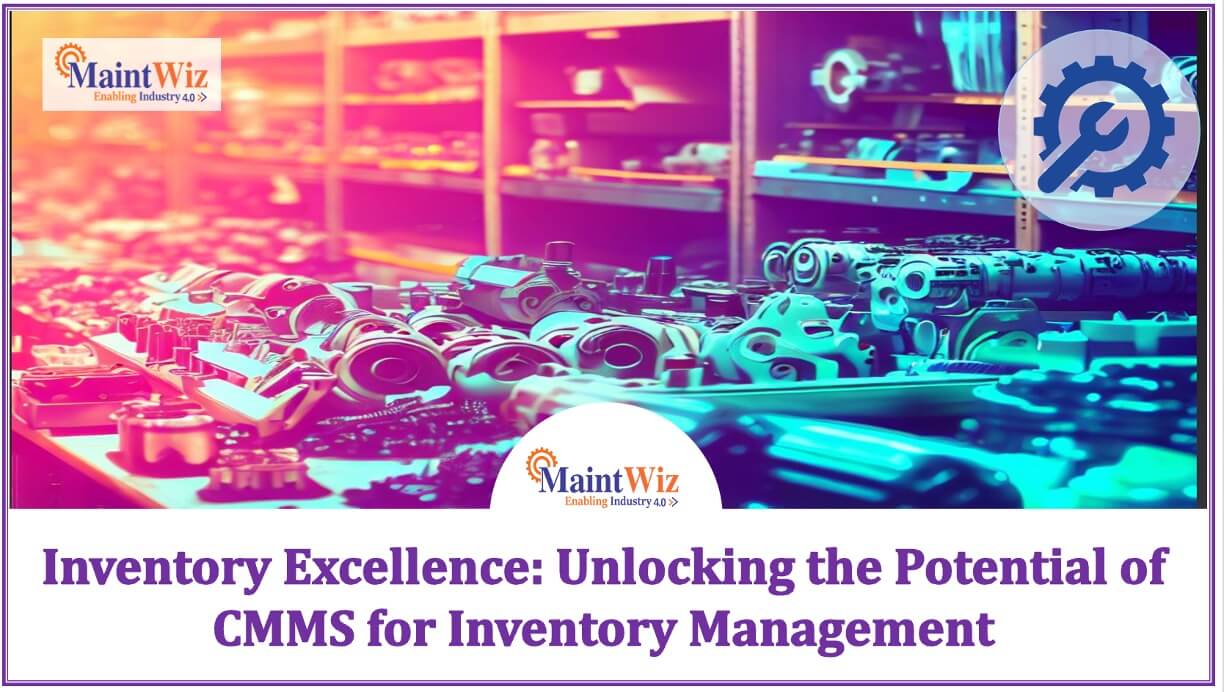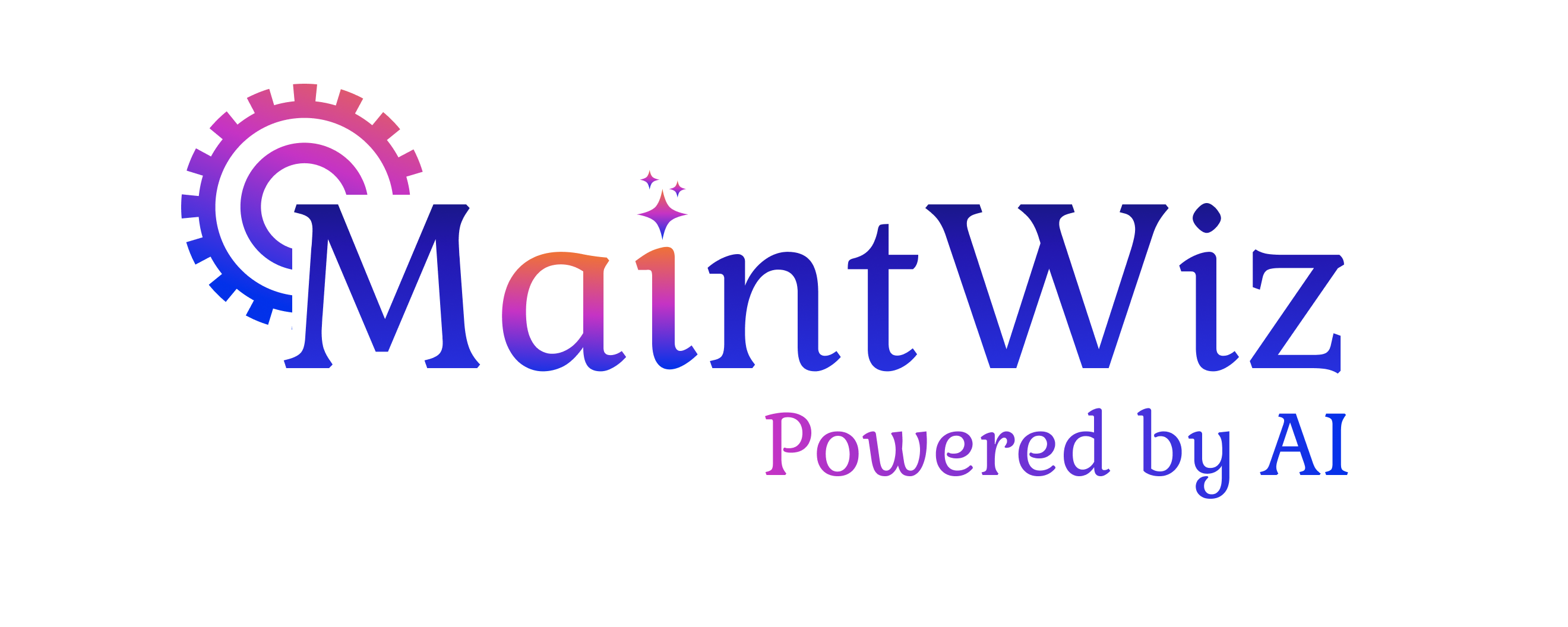
Table of Contents
Introduction to Inventory Excellence
Welcome to the world of Inventory Excellence, where efficient inventory management drives manufacturing success. In this guide, we explore the significance of inventory management and the pivotal role of CMMS in achieving excellence.
What Is Inventory Excellence?
Inventory Excellence is the art of maintaining an optimal balance between supply and demand, ensuring that you have the right parts and materials when you need them, without excess. It’s about minimizing costs, maximizing efficiency, and eliminating disruptions in your production process.
The Significance of Efficient Inventory Management
Efficient inventory management is a cornerstone of manufacturing success. It ensures that your production lines keep running smoothly, prevents costly downtime, and enhances your overall operational efficiency. In today’s competitive landscape, it’s a game-changer.
Role of CMMS in Inventory Excellence
Computerized Maintenance Management Systems (CMMS) play a pivotal role in achieving Inventory Excellence. They provide the tools and insights needed to optimize inventory levels, reduce carrying costs, and streamline inventory-related processes.
Benefits of Implementing CMMS for Inventory Management
Implementing CMMS for Inventory Management offers a wide range of benefits that directly impact your manufacturing operations. Let’s explore some of the key advantages:
Enhanced Inventory Accuracy
CMMS ensures that your inventory data is always up-to-date and accurate. Say goodbye to manual record-keeping and hello to real-time insights into your inventory levels.
Improved Stock Availability
With CMMS, you can set up automated reordering and alerts, ensuring that you never run out of critical parts or materials. Say goodbye to costly production delays due to stockouts.
Cost Reduction through Efficient Inventory Practices
Efficient inventory practices, driven by CMMS, lead to cost reductions. You’ll reduce carrying costs, minimize waste, and optimize your procurement processes.
Key Features of CMMS for Inventory Management
CMMS offers a robust set of features designed to empower your inventory management efforts. Here are some of the key features:
Real-Time Inventory Tracking
CMMS provides real-time visibility into your inventory. Track item quantities, monitor usage, and make informed decisions based on accurate data.
Automated Reordering and Alerts
Set up automated reorder points and receive alerts when inventory levels drop. Never worry about stockouts or overstocking again.
Inventory Data Analytics
Unlock the power of data with CMMS. Analyze historical inventory data to make predictions, optimize stock levels, and reduce costs.
Integration with Supply Chain
CMMS seamlessly integrates with your supply chain. Coordinate with suppliers, streamline procurement, and maintain a smooth flow of materials.
Implementing CMMS for Inventory Excellence
Implementing Computerized Maintenance Management Systems (CMMS) for achieving Inventory Excellence is a strategic move that can significantly impact manufacturing operations. This section delves into the crucial steps and best practices involved in adopting CMMS for efficient inventory management.
Steps to Implement CMMS for Inventory Management:
- Define Clear Objectives: The journey towards Inventory Excellence starts with setting clear objectives. Identify what you aim to achieve with CMMS implementation, whether it’s reducing carrying costs, improving stock availability, or enhancing overall efficiency.
- Select the Right CMMS Solution: Choosing the appropriate CMMS software is paramount. Look for a solution that aligns with your organization’s needs. Ensure it offers features like real-time inventory tracking, automated reordering, and robust analytics.
- Involve Your Team: Successful CMMS implementation requires the involvement of your team. Engage maintenance personnel, inventory managers, and other relevant staff members. Their input and buy-in are essential for a smooth transition.
- Data Migration and Integration: If you are transitioning from manual systems, ensure a seamless data migration process. Integrate your CMMS with existing systems like Enterprise Resource Planning (ERP) or other relevant software to streamline processes.
- Comprehensive Training: Adequate training is critical for your team to harness the full potential of CMMS. Provide training sessions and resources to ensure everyone can use the system effectively.
Best Practices for Inventory Optimization:
- Set Par Levels: Determine minimum and maximum inventory levels for each item. Par levels help prevent both stockouts and overstocking.
- Prioritize Items: Categorize your inventory based on criticality and usage frequency. Focus on optimizing the management of high-priority items first.
- Establish Efficient Procurement Workflows: Design streamlined procurement processes within your CMMS. This includes automating purchase orders, vendor management, and invoice tracking.
- Regular Audits and Cycle Counts: Conduct regular audits and cycle counts to maintain data accuracy. These checks ensure that physical inventory matches digital records.
- Continuous Improvement: Embrace a culture of continuous improvement. Analyze data generated by your CMMS to identify areas for enhancement and cost reduction.
Implementing CMMS for Inventory Excellence requires a well-defined strategy and a commitment to ongoing improvement. By following these steps and best practices, you can harness the power of CMMS to optimize inventory, reduce costs, and enhance overall manufacturing efficiency.
Challenges in Inventory Management with CMMS
While CMMS offers numerous benefits, it’s essential to address potential challenges:
Data Accuracy and Consistency
Ensure that your inventory data is consistently accurate. Regularly update records and conduct audits to maintain data integrity.
Training and Adoption
Train your team to use CMMS effectively. Overcoming resistance to change is crucial for successful adoption.
Scalability and Integration Issues
As your operations grow, ensure that your CMMS solution can scale with you. Integration with other systems may also pose challenges.
Future Trends in Inventory Management with CMMS
The future of inventory management is exciting and driven by technology. Here are some trends to watch out for:
AI and Machine Learning in Inventory Forecasting
AI and machine learning algorithms will revolutionize inventory forecasting, making predictions more accurate and responsive.
IoT and RFID Integration
The Internet of Things (IoT) and RFID technology will provide real-time tracking and monitoring of inventory, enhancing visibility.
Cloud-Based Inventory Solutions
Cloud-based CMMS solutions will continue to gain popularity, offering scalability, accessibility, and data security.
CMMS Selection for Inventory Management
Choosing the right CMMS for your inventory management needs is critical. Here’s how to make an informed decision:
Criteria for Choosing the Right CMMS for Inventory
Consider factors like scalability, ease of use, reporting capabilities, and mobile access when evaluating CMMS options.
Evaluating Vendor Support and Training
Vendor support and training are essential. Ensure that your chosen CMMS provider offers robust support and comprehensive training resources.
Measuring Inventory Excellence
To achieve Inventory Excellence, you need to measure your performance. Key Performance Indicators (KPIs) can help:
Key Performance Indicators (KPIs) for Inventory Management
Track KPIs like inventory turnover rate, stockout rate, and carrying costs to gauge your inventory management success.
Tracking and Continuous Improvement
Regularly track your KPIs and use the data to drive continuous improvement in your inventory management practices.
Conclusion
Unlocking the potential of CMMS for inventory management is the key to achieving Inventory Excellence in the manufacturing industry. By leveraging the benefits and features of CMMS, you can enhance accuracy, improve availability, and reduce costs. Embrace future trends, select the right CMMS solution, and measure your success with KPIs. It’s time to take your inventory management to the next level with MaintWiz CMMS.
Key Takeaways
- Efficient inventory management is crucial for manufacturing success.
- CMMS enhances inventory accuracy, stock availability, and cost reduction.
- Key CMMS features include real-time tracking, automation, analytics, and supply chain integration.
- Implementing CMMS requires careful planning and addressing challenges.
- Future trends include AI, IoT, and cloud-based solutions.
- Choosing the right CMMS involves evaluating criteria and vendor support.
- Measure inventory excellence with KPIs and strive for continuous improvement.

Jai Balachandran is an industry expert with a proven track record in driving digital transformation and Industry 4.0 technologies. With a rich background in asset management, plant maintenance, connected systems, TPM and reliability initiatives, he brings unparalleled insight and delivery excellence to Plant Operations.
Recent Posts
- From Chaos to Order: Simplifying Maintenance Management with Technology
- From Crisis to Control:Regaining Stability with Effective Breakdown Response
- Avoiding Pitfalls: The 7 Biggest Mistakes Plant Managers Make in Maintenance
- Quality Matters: Improve OEE by Reducing Defects and Rework with MaintWiz CMMS
- How to Implement an Effective Lubrication Program for Your Plant Maintenance Strategy
Recent Comments
Company




